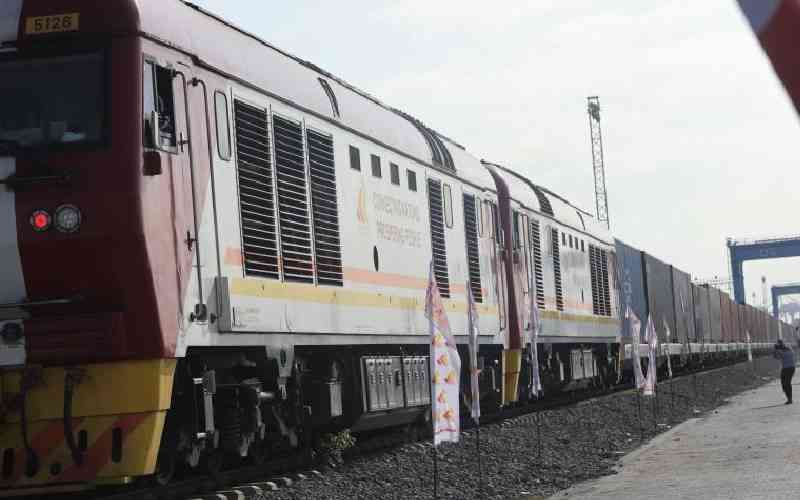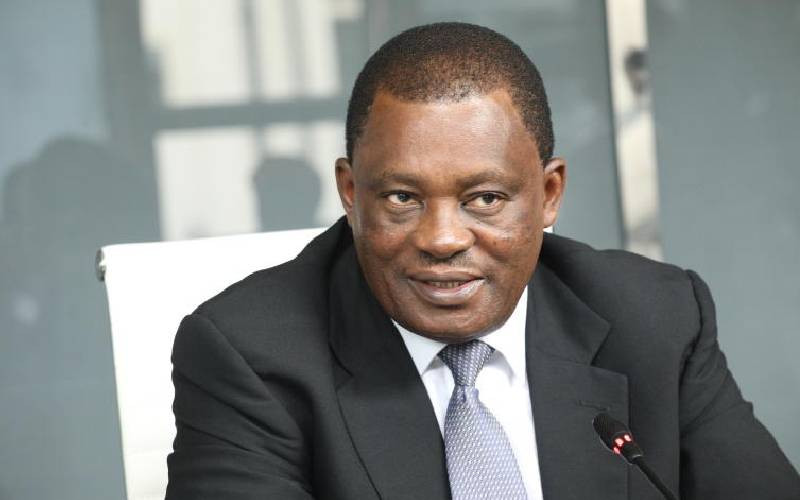More than 122 years ago, the Uganda Railway, after a painstaking four-and-a-half years in the Kenyan wild and Uganda was completed.
Despite it being one of the most labourious 20th Century infrastructure projects, no fanfare accompanied it to herald ‘a new dawn’ in transport.
Details of the launch are scanty. At the Kenya Railways Museum, only a dull group photo of colonial administrators and some of the railway engineers exists. Elias Randiga, the assistant Curator at the museum says only the photo exists to show how the launch was though not “elaborate” in detail.
This is a sharp contrast to the launch of the SGR, where the celebrations and fanfare were the hallmark of the exercise, led by President Uhuru Kenyatta from Mombasa to Nairobi. The end was a revelers party at the KICC.
While news that the Sh327 billion Standard Gauge Railway from Mombasa to Nairobi would be run by foreign contractors for the next ten years might have jolted many, to historians, it is not a surprise considering that it took almost a century for Kenyans to gain control of the first railway.
The construction of the over 900Km ‘lunatic express’ was one of the hallmarks of the British Empire. And in 1901 when Florence Preston, wife to a railway engineer, struck the last spike of the rail on the shores of Lake Victoria, hundreds had died from marauding Tsavo lions commonly known as man eaters of Tsavo, gruesome labour, disease, hunger and clash with local communities. The Economist, a London based publication, would later describe the railway as a “monument to imperial engineering.”
Decades later, Africans were on the verge of self-rule and were calling for the Africanisation of the railway. The colonialists dismissed these calls saying that Africans were still ‘immature’.
In October 1962, Mr. G. Mackay, the General Manager of the East African Railways and Harbours said the pace of Africanisation on the railways could not be accomplished as quickly as some of the more “immature African staff would like to see.”
Months earlier, the Kenya Railways African Union had threatened to ‘blow its whistle’ and put its master plan into operation if Africans were not offered 357 posts to be vacated by expatriates in the next two months.
There were no details of the plan, however. The Union had also planned to prepare a ‘black list’ of non-African staff who should quit the railway service.
This led to condemnation from Mackay and the Railways Asian Union. During the year of independence, Mackay told European staff at EAR & H that it would take more years before Africans acquired the necessary technical skills to take over engineering posts.
“It would be several years before Africans became available with sufficient technical qualifications to take over engineering and other posts with East African Railways and Harbours,” he said.
He observed that Africans were being trained for such posts but it would be some years before they were available in fields where railway experience and ability were the main prerequisites.
He said at the beginning of 1962, Europeans and Asians in the service had numbered 1,509 and 4,230 respectively, whereas at the end of the year were 924 and 3,384.
Emergent Africans
Stay informed. Subscribe to our newsletter
Against this decrease of 1,431 Europeans and Asians the number of graded Africans had risen from 8,632 to 10,124, he said attributing it to the “enthusiasm, willingness to learn and capacity of the emergent Africans.”
An Africanisation Committee had been set up to come up with proposals to ensure a smooth transition, however, European employees then threatened to resign en mass if proposals by the Committee were implemented.
By 1964, the railway had acquired an African boss – Dr Njuguna Gakuo (First Lady Margaret Kenyatta’s father). But Kenya Railways African Union National Secretary W. Ottenyo termed him and his team as a “die-hard colonialists”.
The East African Standard reports that the union demanded that all key policy formulating posts be held forthwith by Africans and that the present policy of perpetuation be destroyed before the ‘Republic Day in December 12.’
“There will be such and industrial unrest that has never been witnessed in the railways,” he said.
A year later, the Industrial Court President Saeed Cockar rejected a demand by the union that the court should decide on the policy for Africanisation.
Years down the line in 1982, it was reported that Kenya had pledged to provide training to railway workers from Zambia, Malawi, Botswana and Swaziland to help them Africanise their railways. The railway has undergone a lot of changes since it was taken over by the Kenya Railway Corporation in 1977 after the collapse of the East African Community. Critics, point to mismanagement as the cause to its woes.
For the SGR, we can only wait until Kenyans take over and hope that it will not be part of the “emblems of economic mismanagement” as the Economist described Kenya’s and Africa’s railways in the 1980s.
 The Standard Group Plc is a
multi-media organization with investments in media platforms spanning newspaper
print operations, television, radio broadcasting, digital and online services. The
Standard Group is recognized as a leading multi-media house in Kenya with a key
influence in matters of national and international interest.
The Standard Group Plc is a
multi-media organization with investments in media platforms spanning newspaper
print operations, television, radio broadcasting, digital and online services. The
Standard Group is recognized as a leading multi-media house in Kenya with a key
influence in matters of national and international interest.
 The Standard Group Plc is a
multi-media organization with investments in media platforms spanning newspaper
print operations, television, radio broadcasting, digital and online services. The
Standard Group is recognized as a leading multi-media house in Kenya with a key
influence in matters of national and international interest.
The Standard Group Plc is a
multi-media organization with investments in media platforms spanning newspaper
print operations, television, radio broadcasting, digital and online services. The
Standard Group is recognized as a leading multi-media house in Kenya with a key
influence in matters of national and international interest.









